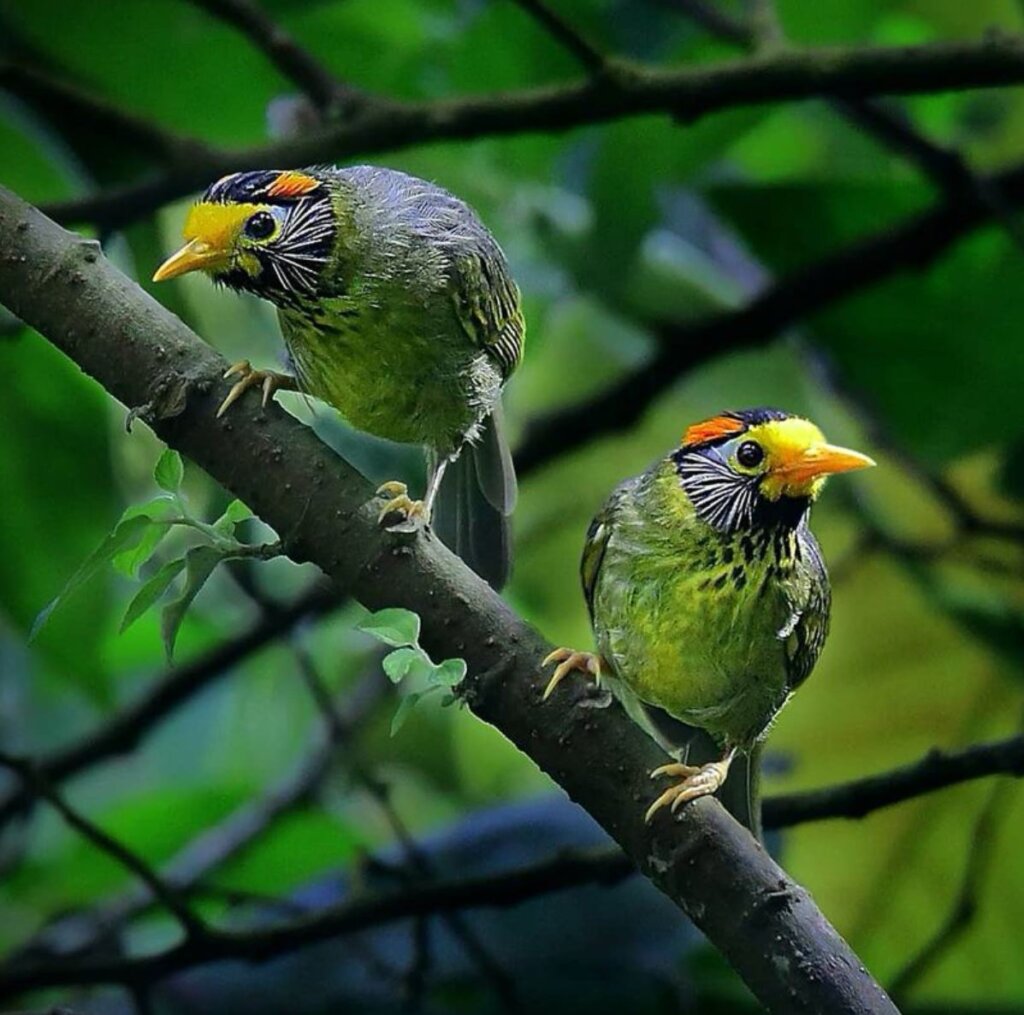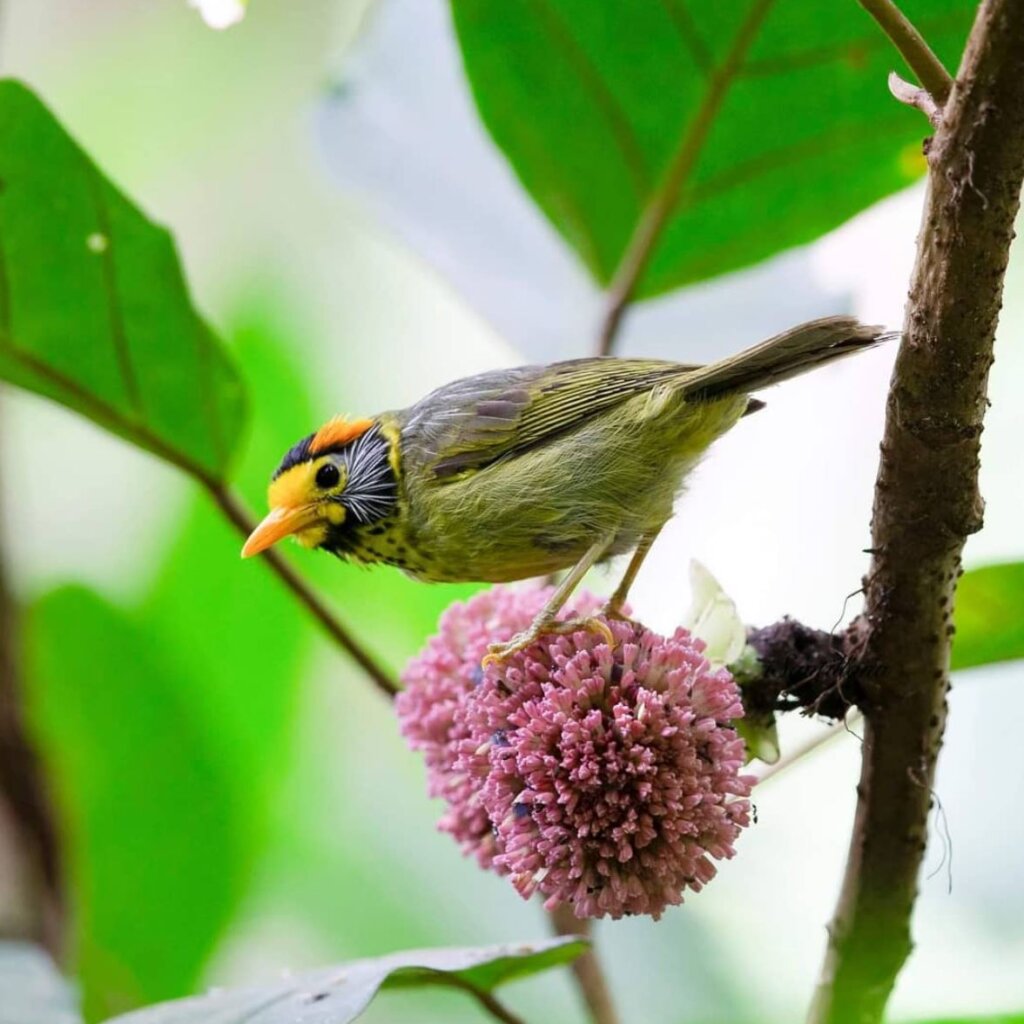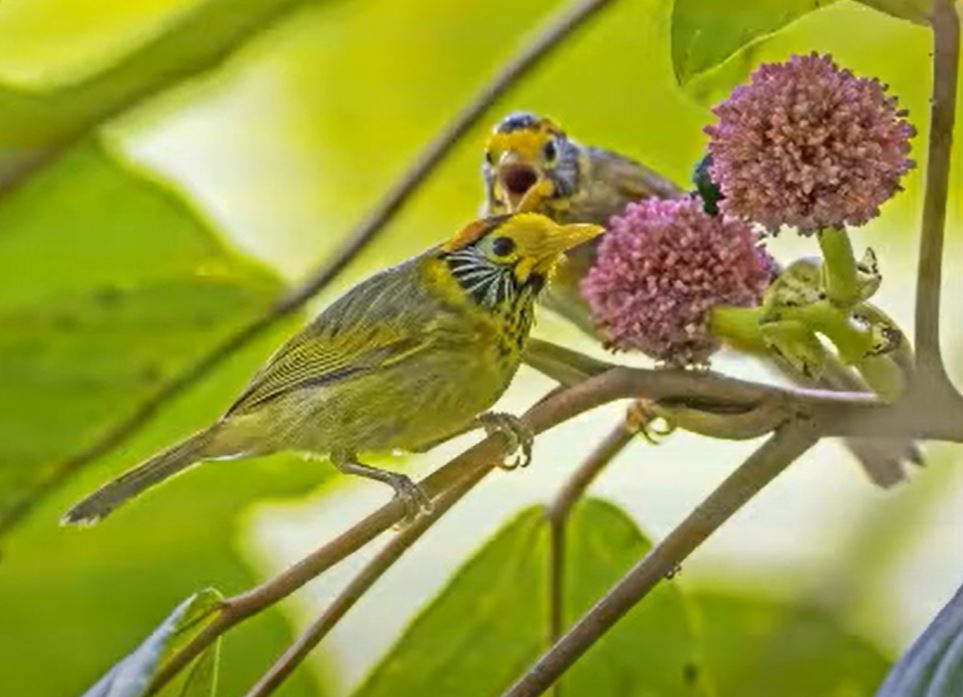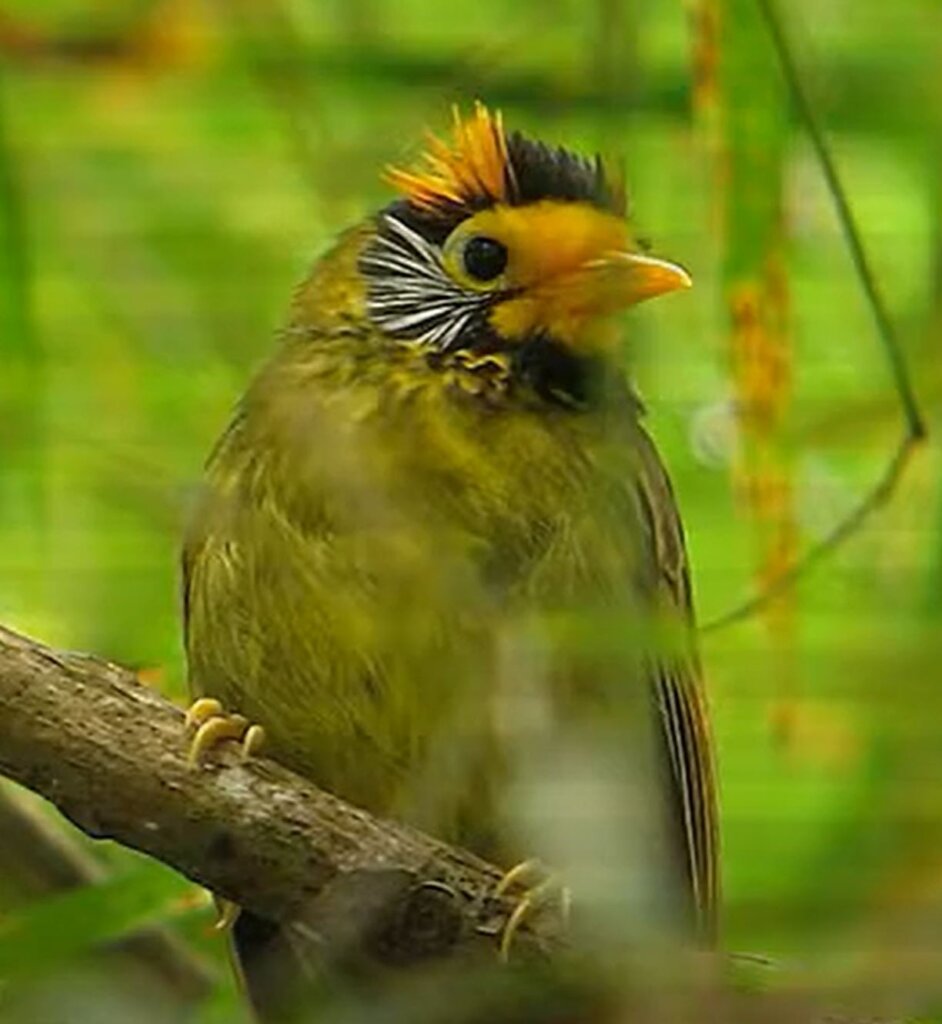beautiful bird decked out in a complex pattern of orange, yellow, black, and white all finished off by a remarkable mustache-like stripe!
Meet The Flame-templed babbler

Photo Courtesy of Instagram/stainindigo
The flame-templed babbler (Dasycrotapha speciosa) is a small bird only measuring about 6.3 inches (16 centimeters0 in length. They have short rounded wings, the upper areas of which are covered mostly in olive-green to grey with white streaks. The back, rump and tail are a similar color. The rest of this bird’s plumage is patterned yellow, black, orange, and white. They also wear fiery-orange tufts above their eyes after which they were named. The throat and chest are a dull yellow with large black spots. The ear coverts are black with fine, white streaks. The rest of the neck and top of the crown is also black.

Photo Courtesy of Instagram/_samirjbirds_
Males and females look exactly alike.
Related Reading:
– Hey, up there 67, our most popular photos up to the week ending 06/19/2022!
Juveniles though, look just like a duller version of their adult counterparts.

Photo Courtesy of Instagram/speciesaday
These birds can only be found on the islands of Panay and Negros in the west central Philippines.

Photo Courtesy of Instagram/stainindigo
The Flame-templed babbler is more likely to be heard long before they are seen, preferring to inhabit the dense undergrowth and understorey of lowland forests below 3300 feet (1000 meters).

Photo Courtesy of Instagram/stainindigo
This species likes to dine on insects found close to the ground, in understorey bushes and trees, or in dense growths of vines and ferns on larger trees. Highly sociable birds they can often be found foraging in mixed-species feeding flocks, together with fantails, leaf-warblers, and tailorbirds.

Photo Courtesy of Instagram/ugin_bxu
Not much is known about the breeding habits of the Flame-templed babbler, however, as far as the timing of the breeding season is concerned, it appears to be highly variable, with some birds found to be in breeding condition in December and others from April through to August.

Screenshot via YouTube/Karl V
The main threat to this species is continued habitat loss with wholesale clearance of forest habitats as a result of logging, agricultural conversion, and mining activities occurring within its range.

Screenshot via YouTube/Karl V